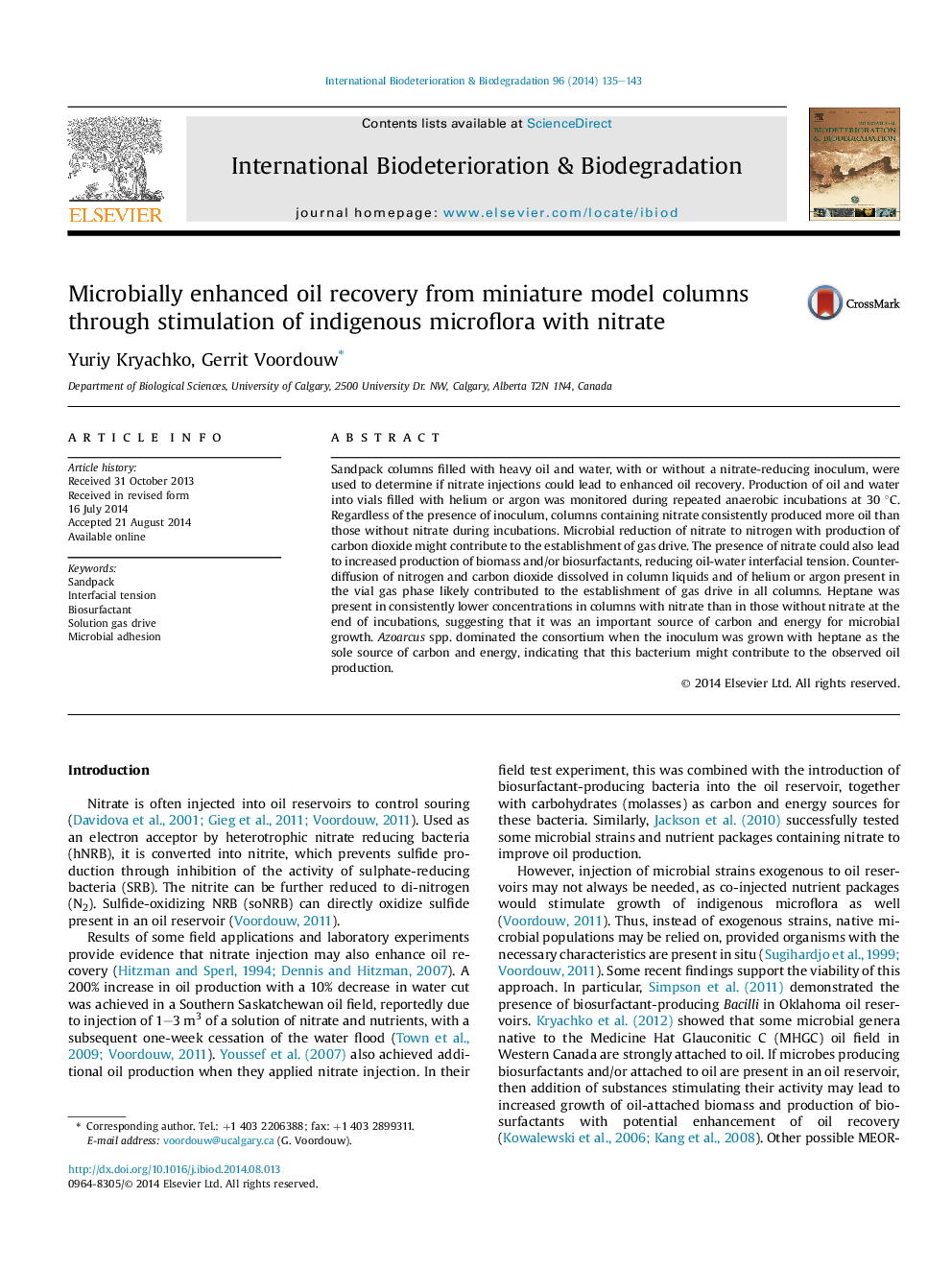| Article ID | Journal | Published Year | Pages | File Type |
|---|---|---|---|---|
| 6289240 | International Biodeterioration & Biodegradation | 2014 | 9 Pages |
Abstract
Sandpack columns filled with heavy oil and water, with or without a nitrate-reducing inoculum, were used to determine if nitrate injections could lead to enhanced oil recovery. Production of oil and water into vials filled with helium or argon was monitored during repeated anaerobic incubations at 30 °C. Regardless of the presence of inoculum, columns containing nitrate consistently produced more oil than those without nitrate during incubations. Microbial reduction of nitrate to nitrogen with production of carbon dioxide might contribute to the establishment of gas drive. The presence of nitrate could also lead to increased production of biomass and/or biosurfactants, reducing oil-water interfacial tension. Counter-diffusion of nitrogen and carbon dioxide dissolved in column liquids and of helium or argon present in the vial gas phase likely contributed to the establishment of gas drive in all columns. Heptane was present in consistently lower concentrations in columns with nitrate than in those without nitrate at the end of incubations, suggesting that it was an important source of carbon and energy for microbial growth. Azoarcus spp. dominated the consortium when the inoculum was grown with heptane as the sole source of carbon and energy, indicating that this bacterium might contribute to the observed oil production.
Related Topics
Life Sciences
Environmental Science
Environmental Science (General)
Authors
Yuriy Kryachko, Gerrit Voordouw,
